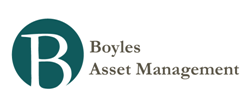Money and Finance
- Howard Marks Comments...
Comments by Howard Marks from the Goldman Sachs U.S. Financial Services Conference today (via a transcript, so they may not be perfectly exact): ...as we were sitting here waiting to start, that I was animated when he spoke to me yesterday, and really,...
- Howard Marks Quote
From The Most Important Thing:Superior investors know—and buy—when the price of something is lower than it should be. And the price of an investment can be lower than it should be only when most people don’t see its merit. Yogi Berra is famous for...
- Howard Marks' Crystal Ball Proved Accurate
Link to article: Howard Marks' Crystal Ball Proved Accurate Ten years ago, veteran investor and writer Howard Marks sent a contrarian -- and prescient -- memo to clients of his firm, Oaktree Capital Management, assessing the state of the hedge...
- Howard Marks On Skepticism
From The Most Important Thing:The global credit crisis of 2007– 2008 represents the greatest crash I have ever seen. The lessons to be learned from this experience are many, which is one reason I discuss aspects of it in more than one chapter. For me,...
- Excerpt From The Most Important Thing Illuminated - By Howard Marks
Contrarianism By Howard Marks, Author of The Most Important Thing Illuminated: Uncommon Sense for the Thoughtful Investor Accepting the broad concept of contrarianism is one thing; putting it into practice is another. On one hand, we never know how...
Money and Finance
It’s our job as contrarians to catch falling knives...
Given some of Howard Marks' more recent comments, as well as some of Oaktree's recent investments in the distressed energy space, this excerpt from The Most Important Thing seemed worth revisiting:
Skepticism is usually thought to consist of saying, “no, that’s too good to be true” at the right times. But I realized in 2008—and in retrospect it seems so obvious—that sometimes skepticism requires us to say, “no, that’s too bad to be true.”
Most purchases of depressed, distressed debt made in the fourth quarter of 2008 yielded returns of 50 to 100 percent or more over the next eighteen months. Buying was extremely difficult under those trying circumstances, but it was made easier when we realized that almost no one was saying, “no, things can’t be that bad.” At that moment, being optimistic and buying was the ultimate act of contrarianism.
~~~
Certain common threads run through the best investments I’ve witnessed. They’re usually contrarian, challenging and uncomfortable—although the experienced contrarian takes comfort from his or her position outside the herd. Whenever the debt market collapses, for example, most people say, “We’re not going to try to catch a falling knife; it’s too dangerous.” They usually add, “We’re going to wait until the dust settles and the uncertainty is resolved.” What they mean, of course, is that they’re frightened and unsure of what to do.
The one thing I’m sure of is that by the time the knife has stopped falling, the dust has settled and the uncertainty has been resolved, there’ll be no great bargains left . When buying something has become comfortable again, its price will no longer be so low that it’s a great bargain. Thus, a hugely profitable investment that doesn’t begin with discomfort is usually an oxymoron.
It’s our job as contrarians to catch falling knives, hopefully with care and skill. That’s why the concept of intrinsic value is so important. If we hold a view of value that enables us to buy when everyone else is selling—and if our view turns out to be right—that’s the route to the greatest rewards earned with the least risk.
- Howard Marks Comments...
Comments by Howard Marks from the Goldman Sachs U.S. Financial Services Conference today (via a transcript, so they may not be perfectly exact): ...as we were sitting here waiting to start, that I was animated when he spoke to me yesterday, and really,...
- Howard Marks Quote
From The Most Important Thing:Superior investors know—and buy—when the price of something is lower than it should be. And the price of an investment can be lower than it should be only when most people don’t see its merit. Yogi Berra is famous for...
- Howard Marks' Crystal Ball Proved Accurate
Link to article: Howard Marks' Crystal Ball Proved Accurate Ten years ago, veteran investor and writer Howard Marks sent a contrarian -- and prescient -- memo to clients of his firm, Oaktree Capital Management, assessing the state of the hedge...
- Howard Marks On Skepticism
From The Most Important Thing:The global credit crisis of 2007– 2008 represents the greatest crash I have ever seen. The lessons to be learned from this experience are many, which is one reason I discuss aspects of it in more than one chapter. For me,...
- Excerpt From The Most Important Thing Illuminated - By Howard Marks
Contrarianism By Howard Marks, Author of The Most Important Thing Illuminated: Uncommon Sense for the Thoughtful Investor Accepting the broad concept of contrarianism is one thing; putting it into practice is another. On one hand, we never know how...

